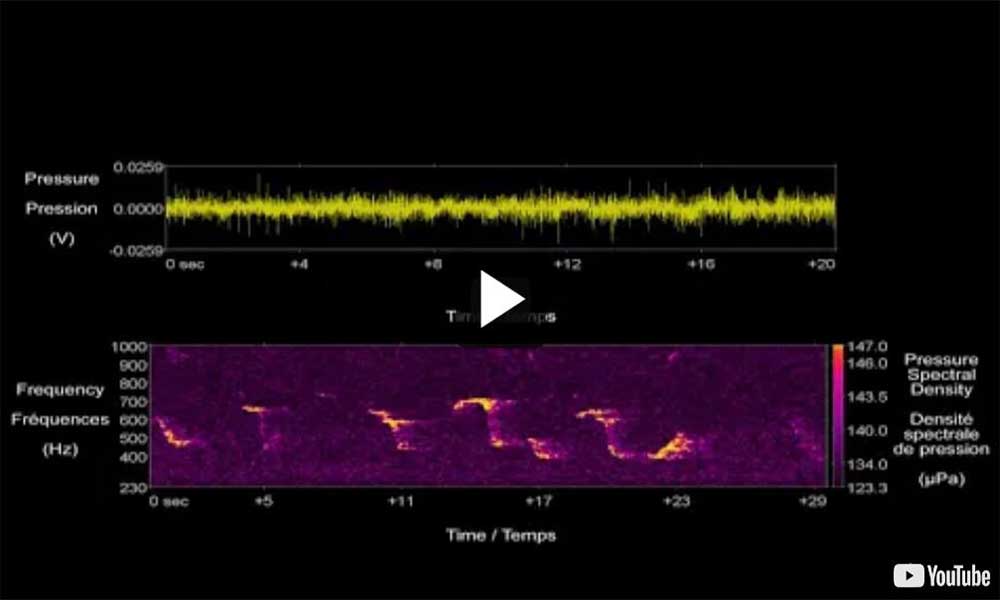Humpback Whale Catalogue
Humpback whales (Megaptera novaeangliae) migrate between high latitude summer feeding grounds and low latitude winter breeding grounds. In the North Pacific, winter breeding grounds are known in waters off Japan, Hawaii and Mexico; summer feeding grounds are found in coastal waters of Alaska, British Columbia and the western mainland United States. Researchers use photographs of the ventral surface of the tail flukes to identify and track movements of individual whales and to estimate abundance. Patterns of pigmentation, scarring and shape of the flukes are unique to each individual.
This catalogue is a collection of identification photographs of humpback whales seen in British Columbian waters from 1989 to 2007. The majority of the data were collected by the Cetacean Research Program at the Pacific Biological Station, as part of its assessments of the conservation status of cetacean species-at-risk. Most photographs and data were collected in known areas of concentration along the coast of British Columbia, including Langara Island, southeast Moresby Island, the northern mainland, and southwest Vancouver Island.
Each individual humpback is given a unique alphanumeric identifier. Each identifier starts with BC to indicate that the animal was seen in British Columbian waters. Following the BC is an X, Y or Z, corresponding to the amount of white on the flukes and a number to identify the individual. BCX## contain approximately 0-20% white, BCY## have approximately 20-80% white and BCZ## have approximately 80-100% white. The catalogue is generally arranged in order of increasing white pigmentation. BCX flukes are further arranged into groups of similar appearance, and thus may not be in order of increasing white pigmentation.
Guidelines for taking identification photographs of humpback whales
- Identifications photographs are of the ventral side (underside) of the tail flukes.
- Photographs should be taken at a range where the identifying features and the trailing edge are clearly visible. We suggest using a telephoto lens to maximize your distance to the whale. Remember to follow the viewing guidelines closely and avoid approaching closer than 100 metres to the whale.
- Photographs should be in sharp focus in order to obtain the identifying features and trailing edge.
- At least 50% of the flukes should be above the surface and in the photograph.
- Flukes should be at an angle of 90° or facing you in such a way that the identifying features and the trailing edge are clearly visible.
- Note the date, time, general location, and latitude and longitude (if possible) of the animal photographed.
Contact and Send Photographs to:
Cetacean Research Program
Pacific Biological Station
3190 Hammond Bay Rd
Nanaimo B.C. V9T 6N7
Phone: (250) 756-7253
Email: John.K.Ford@dfo-mpo.gc.ca
Conditions of Use
This website is provided for the use of researchers or people interested in humpback whale identification. Photographs and data may not be used in any form without permission.
Collecting identification photographs of humpback whales is encouraged but caution must be used to avoid disturbing the animals while doing so. Please refer to the Department of Fisheries and Oceans viewing guidelines and follow these guidelines closely. If you would like more information on a humpback you have identified or would like to contribute identification photographs, please contact the Cetacean Research Program at the Pacific Biological Station.
- Date modified:




